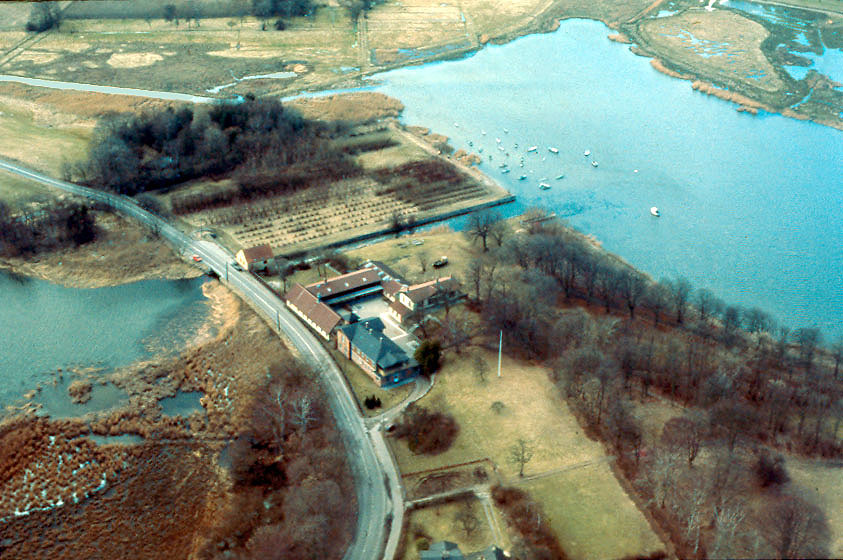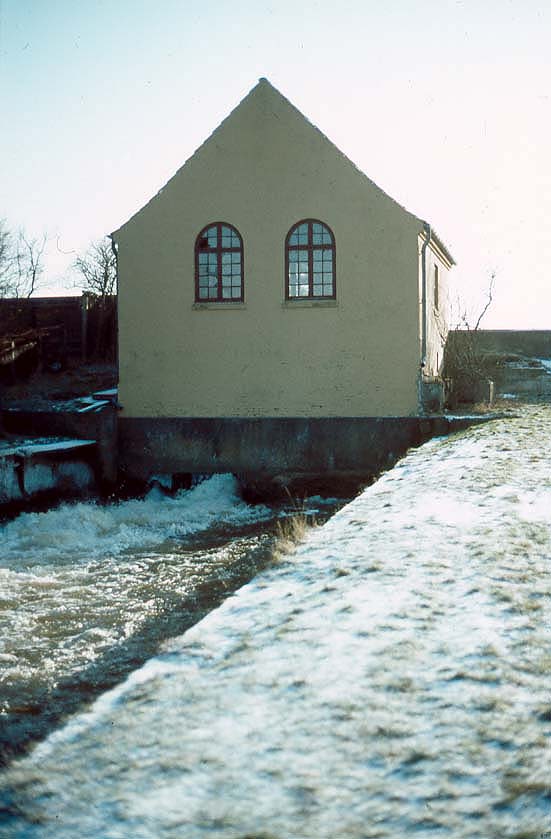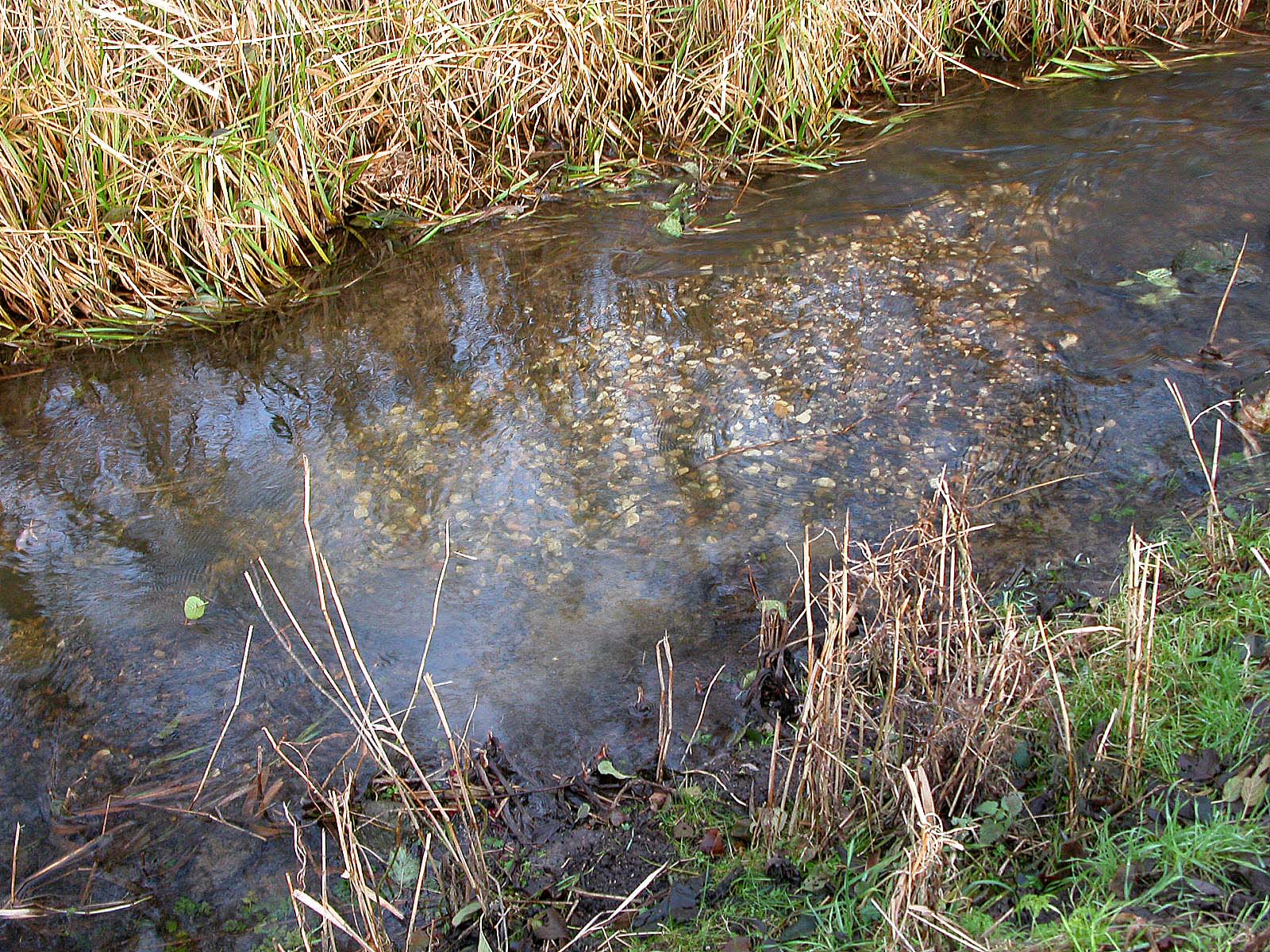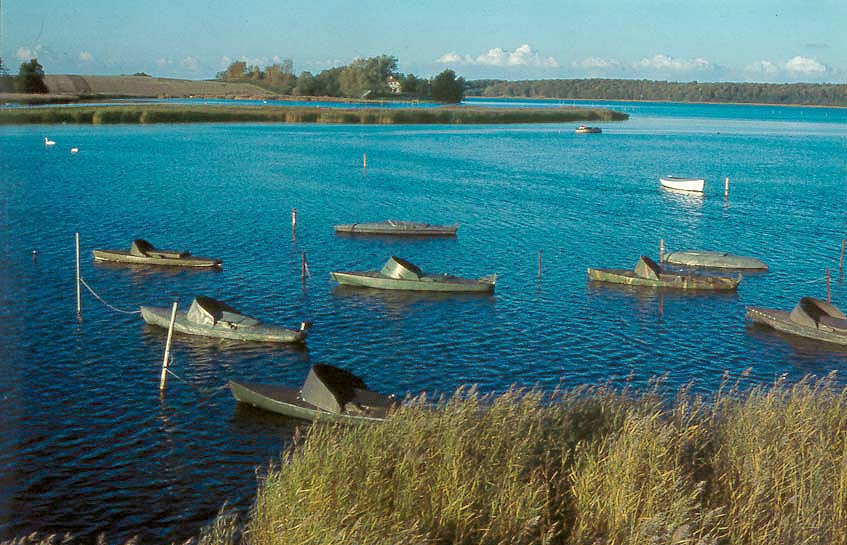Kattinge Works
 Kattinge Værk from the south east, showing the canal and the turbine house.
Kattinge Værk from the south east, showing the canal and the turbine house.
At the very end of Roskilde Fjord, at the bottom of Kattinge Vig, lies the little inlet known as Slinken. The fjord originally reached further into the countryside, and the present Kattinge Lake was part of the fjord, but in the fourteenth century a dam was built to provide water for a mill, which stood where Sanct Hans is now. The dam connects three small hills to the west of the works, between the road and the lake. Nebbe castle was built here. No one knows who built it but it may have been the bishop of Roskilde or another member of the Hvide family, which had a lot of property in the area at that time.
In the eighteenth century the dam was breached and a water mill (for a fuller’s and a flourmill) established on the site of the present Kattinge Works. At the end of last century the works was converted to a cellulose factory, which obtained electricity for lighting from the water mill. To the east of the works a jetty was built, connected to the factory by a short railway line.
The cellulose factory was in business until 1910. Since then the buildings have been used for various purposes and today they are used as a kindergarten and a school camp for Copenhagen city council.

The turbine house at Kattinge Værk, where they used to catch elvers.
On its way to the fjord the water from Kattinge Lake passes through the old turbine house, at the rate of some 50 million cubic metres a year. The pump house was used for many years to catch elvers, which were sold for release in many parts of the country. Large fibreglass tanks were placed in the pumphouse. The water passed through these and then over straw mats and down into the water channel. Early in the summer the pencil-sized eels crawled up the mats and into the tanks. From here they were taken in large containers to the places where they were to be released. This was normally done at night because of the heat, and oxygen was added to the containers on the way so that the eels would not be suffocated. Eels are no longer caught here, but Roskilde county council has built a fish ladder beside the pump house. For the first time since the dam was built in the fourteenth century, trout are now able to move up the Kornerup River to spawn.
 A trout spawning site in Kornerup stream.
A trout spawning site in Kornerup stream.
There was intense speculation as to what, if any, use the trout would make of the ladder, but a trap built into the ladder has shown that it has been a success, and that a good few trout move up the waterways every year. At the end of the year you can see a lot of spawning sites, which look like light patches on the river bed, where gravel has been disturbed by the trout.
The turbine house is now used as a nature centre.
 Shooting punts off Kattinge værk.
Shooting punts off Kattinge værk.
